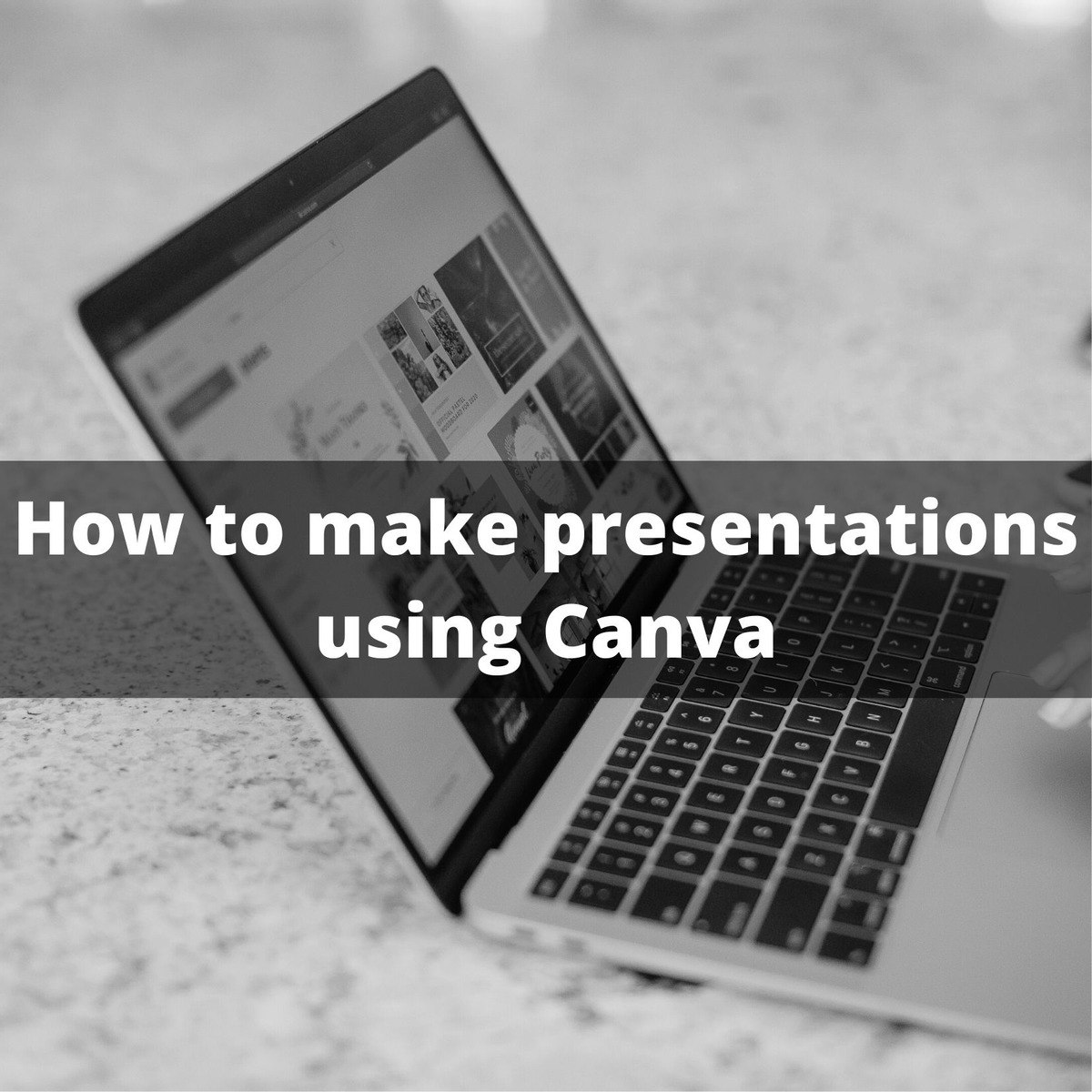Presentations
Mastering the Art and Science of Presentations
Presentations are a fundamental form of communication, involving the process of conveying information, ideas, or proposals to an audience. At its core, a presentation is a structured way to share knowledge, influence thinking, or drive action. Whether delivering a complex scientific finding, pitching a new business venture, or teaching a classroom subject, the ability to present effectively is a crucial skill in nearly every facet of modern life, from academic pursuits to professional advancement.
The power of a well-crafted presentation lies in its ability to engage, inform, and persuade. It offers a unique opportunity to connect directly with an audience, tailor a message for maximum impact, and leave a lasting impression. For many, mastering presentation skills opens doors to leadership roles, enhances collaborative efforts, and provides a platform to showcase expertise and passion. The process itself, from research and structuring content to designing visuals and practicing delivery, can be a deeply rewarding experience, honing critical thinking and communication abilities.
Core Elements of Effective Presentations
Crafting and delivering a successful presentation involves several key components working in harmony. Understanding these elements provides a solid foundation for anyone looking to improve their presentation skills, whether for academic assignments, workplace meetings, or public speaking engagements.
Structure: The Blueprint of Your Message
A clear structure is the backbone of any effective presentation. Typically, this follows a logical progression: an introduction to capture attention and state the purpose, a body to develop key points with supporting evidence or details, and a conclusion to summarize the main message and provide a call to action or final thought. The introduction should immediately engage the audience and outline what they will learn. Setting the stage properly helps the audience follow the narrative.
The body of the presentation is where the core content resides. This section should be organized logically, perhaps chronologically, thematically, or by order of importance. Each key point needs clear explanation and support, using examples, data, stories, or visuals. Transitions between points should be smooth to maintain flow and coherence. A well-structured body ensures the message is easy to understand and remember.
Finally, the conclusion serves to reinforce the main takeaways and leave a lasting impact. It should concisely summarize the key points discussed in the body and reiterate the presentation's central message or purpose. Depending on the context, the conclusion might also include recommendations, next steps, or a compelling closing statement that prompts further thought or action from the audience.
These courses offer guidance on structuring and delivering impactful presentations.
Visual Design Principles
In many presentations, visual aids like slides play a crucial role in supporting the message and engaging the audience. Effective visual design prioritizes clarity, consistency, and relevance. Slides should complement the speaker's words, not distract from them. This means avoiding excessive text, using high-quality images and graphics purposefully, and maintaining a clean, professional look.
Key principles include using a consistent color scheme and font style throughout the presentation. Text should be large enough to be easily readable from a distance. Bullet points are often more effective than dense paragraphs. Visual elements like charts, graphs, and diagrams should be used to simplify complex information and illustrate key data points effectively. Remember, the goal is to enhance understanding, not overwhelm the audience with visual clutter.
Tools like Microsoft PowerPoint, Google Slides, or Canva offer numerous templates and features, but the focus should always be on clear communication rather than flashy effects. Understanding basic design principles can significantly improve the impact of visual aids.
These books delve into the principles of effective visual communication in presentations.
For those looking specifically for guidance in Spanish, this translation is available.
Audience Analysis and Engagement
Understanding your audience is paramount to delivering a presentation that resonates. Before crafting your message, consider who your audience is: What is their background knowledge? What are their interests and expectations? What do they hope to gain from your presentation? Tailoring your content, language, and level of detail to your specific audience increases relevance and impact.
Engaging the audience throughout the presentation is equally important. Passive listening can lead to disinterest. Techniques to maintain engagement include asking rhetorical questions, incorporating interactive elements like polls or Q&A sessions, telling relevant stories, using humor appropriately, and making eye contact with different members of the audience. Varying the pace and tone of delivery also helps keep listeners attentive.
For virtual presentations, engagement requires extra effort. Utilizing features like chat, polls, and breakout rooms can foster interaction. Ensuring visuals are compelling and delivery is energetic helps bridge the distance created by the screen. Adapting engagement strategies based on the audience and the presentation format is key to success.
Delivery Techniques
How you deliver your presentation is just as important as the content itself. Effective delivery involves a combination of vocal variety, body language, and pacing. Your voice should be clear, audible, and expressive. Varying your tone, pitch, and speed can emphasize key points and maintain audience interest. Avoid speaking in a monotone, which can quickly disengage listeners.
Body language plays a significant role in conveying confidence and enthusiasm. Maintain good posture, use purposeful gestures to emphasize points, and move naturally if space allows. Making consistent eye contact with various audience members helps establish a connection and gauge their reactions. A confident and open posture can make the speaker appear more credible and approachable.
Pacing refers to the speed at which you deliver the presentation and move through your material. Rushing through content can make it difficult for the audience to follow, while speaking too slowly might lead to boredom. Practice your timing to ensure you cover all necessary points within the allotted time, allowing pauses for emphasis or to let key ideas sink in. Rehearsal is crucial for refining delivery techniques and building confidence. According to Harvard Business Review, focusing on the message and the audience, rather than oneself, can significantly reduce anxiety.
These courses cover essential soft skills, including delivery techniques vital for presentations.
Types of Presentations
Presentations come in many forms, tailored to specific contexts, goals, and audiences. Recognizing the different types and their unique requirements allows presenters to adapt their approach effectively, whether in an academic setting, a business meeting, or a public forum.
Academic vs. Business Presentations
Academic presentations, such as thesis defenses, conference papers, or lectures, typically prioritize depth, rigor, and the dissemination of research findings or scholarly knowledge. The audience often consists of peers, experts, or students within a specific field. Clarity, logical structure, thorough evidence, and adherence to disciplinary conventions are crucial. The goal is usually to inform, educate, or contribute to scholarly discourse.
Business presentations, on the other hand, often focus on persuasion, decision-making, or achieving specific organizational outcomes. Examples include sales pitches, project proposals, marketing plans, or internal updates. The audience might range from clients and investors to colleagues and executives. Brevity, clarity, a strong call to action, and a focus on results or solutions are typically valued. While evidence is important, the emphasis is often on practical application and impact.
Transitioning between these styles requires adjusting content depth, language formality, visual design, and overall objective. Understanding the distinct expectations of each context is key for effective communication in both academic and professional environments.
Informational vs. Persuasive Goals
The primary goal of a presentation significantly shapes its content and delivery. Informational presentations aim to educate the audience by explaining a topic, reporting findings, or providing instructions. Examples include training sessions, technical briefings, or status updates. Clarity, accuracy, logical organization, and comprehensiveness are key. The presenter acts as an objective expert, focused on conveying knowledge effectively.
Persuasive presentations seek to influence the audience's beliefs, attitudes, or actions. Sales pitches, fundraising requests, policy proposals, and motivational speeches fall into this category. These presentations often employ rhetorical strategies, emotional appeals, and compelling arguments to convince the audience. The presenter takes on the role of an advocate, aiming to build rapport and inspire agreement or action. While information is still crucial, it serves the larger purpose of persuasion.
Recognizing whether the primary goal is to inform or persuade helps in structuring the message, selecting appropriate supporting material, and choosing the right tone and delivery style. Many presentations contain elements of both, but understanding the main objective provides necessary focus.
Delivery Modes: Virtual, Hybrid, and In-Person
The mode of delivery profoundly impacts the presentation experience. In-person presentations allow for direct interaction, immediate feedback through body language, and a shared physical environment, which can foster connection. However, they require physical presence and logistical coordination.
Virtual presentations, delivered entirely online using platforms like Zoom or Teams, offer accessibility and reach a geographically dispersed audience. They require proficiency with technology, strategies to maintain engagement across screens, and careful attention to visual and audio quality. Challenges include potential technical glitches and difficulty reading non-verbal cues.
Hybrid presentations involve a mix of in-person and remote audience members, presenting unique challenges in ensuring an equitable experience for everyone. Presenters must engage both groups simultaneously, manage technology to bridge the physical gap, and facilitate interaction effectively across different modes of participation. Each delivery mode demands specific skills and preparation strategies to maximize effectiveness.
Sector-Specific Approaches
Presentation styles and expectations can vary significantly across different industries or sectors. For instance, presentations in the tech industry might emphasize data visualization, lean towards concise formats like lightning talks, and utilize cutting-edge presentation software. Demonstrations and prototypes are often central.
In healthcare, presentations might involve communicating complex medical information to diverse audiences, including patients, colleagues, or policymakers. Clarity, accuracy, empathy, and adherence to privacy regulations are paramount. Visual aids might include medical imaging or simplified diagrams.
Financial presentations often revolve around data analysis, forecasting, and risk assessment, demanding precision, objectivity, and sophisticated data visualization techniques. Presentations in creative fields might prioritize visual storytelling, aesthetics, and showcasing portfolio work. Understanding these sector-specific nuances is crucial for tailoring presentations effectively.
Presentations in Formal Education
Presentation skills are increasingly integrated into educational curricula at all levels, from elementary school reports to doctoral defenses. Developing these skills is recognized not just as preparation for future careers, but as an essential component of learning itself, fostering critical thinking, research abilities, and effective communication.
Integration Across the Curriculum
From K-12 through higher education, students are frequently required to present their work. In early grades, this might involve simple "show and tell" or book reports, building confidence and basic speaking skills. In high school, presentations become more formal, often involving research projects, group work, and the use of visual aids. Students learn to structure arguments, cite sources, and engage with an audience.
At the university level, presentations are a staple of many courses. Undergraduates present research findings, lead class discussions, or pitch project ideas. Graduate students, particularly those pursuing research degrees, face high-stakes presentations like conference talks, proposal defenses, and the final thesis or dissertation defense. These demand sophisticated communication skills, deep subject matter expertise, and the ability to field challenging questions from experts.
This progressive integration aims to equip students with the communication competencies needed for academic success and professional life. OpenCourser offers resources across various subjects, many of which incorporate presentation components, accessible via the browse page.
This book is specifically aimed at students navigating academic presentations.
This course focuses on skills relevant for academic settings.
Assessment Criteria in Academia
When presentations are graded in educational settings, assessment typically goes beyond just the content. Evaluators often look at a range of criteria, which may include the clarity and organization of the message, the depth of research and understanding demonstrated, the effective use of evidence and examples, and the quality of visual aids.
Delivery skills are also frequently assessed. This can encompass vocal clarity and projection, pacing, body language, eye contact, and the ability to engage the audience. Handling questions effectively, demonstrating critical thinking in responses, and adhering to time limits are other common assessment points. Understanding the specific rubric or criteria used for evaluation helps students focus their preparation efforts effectively.
Instructors aim to provide constructive feedback that helps students identify strengths and areas for improvement. The goal is not just to assign a grade, but to foster the development of well-rounded communication skills applicable beyond the classroom.
Research Presentation Standards
Presenting research, whether at academic conferences or during a thesis defense, involves specific conventions. Clarity and conciseness are essential, especially when presenting complex findings to a diverse audience or within strict time constraints. Researchers must clearly articulate their research question, methodology, key findings, and the significance of their work.
Visual aids, typically slides, are used to display data, key concepts, and evidence. These should be designed for clarity and adhere to disciplinary norms regarding formatting and content. Effectively handling the question-and-answer session is a critical component, requiring presenters to listen carefully, provide thoughtful responses, and defend their work confidently and respectfully.
Mastering research presentation standards is vital for disseminating scholarly work, engaging with the academic community, and advancing one's academic career. It requires not only strong research skills but also the ability to communicate that research compellingly.
This course can help researchers promote their findings effectively.
Cross-Disciplinary Differences
Presentation styles and expectations can vary significantly across different academic disciplines. Presentations in the humanities might emphasize textual analysis, argumentation, and narrative structure, often with fewer visual aids compared to the sciences. Visuals, when used, might focus on primary source materials or conceptual frameworks.
In the sciences and engineering, presentations typically center on empirical data, methodology, and results. Data visualization through graphs, charts, and tables is crucial. Structure often follows the scientific method (Introduction, Methods, Results, Discussion). Precision, objectivity, and clarity in conveying technical information are highly valued.
Social sciences presentations often blend qualitative and quantitative approaches, requiring presenters to synthesize diverse forms of evidence and theoretical perspectives. Presentations in the arts may involve performance, portfolio showcases, or critical analyses of creative works, prioritizing aesthetic considerations alongside intellectual content. Recognizing and adapting to these disciplinary norms is essential for effective academic communication.
Digital Tools for Modern Presentations
Technology has revolutionized how presentations are created and delivered. A wide array of digital tools now exists, offering sophisticated features for design, interactivity, data visualization, and even AI assistance. Choosing the right tools and using them effectively can significantly enhance the impact and professionalism of a presentation.
Software Landscape: Beyond Basic Slides
While traditional slide deck software like Microsoft PowerPoint, Google Slides, and Apple Keynote remain popular, the landscape has expanded. These platforms offer robust features for creating structured, visually appealing presentations. Many online courses focus on mastering these standard tools.
Beyond standard slides, interactive presentation platforms like Prezi offer non-linear, zooming interfaces for a more dynamic flow. Tools like Mentimeter or Slido allow for real-time audience interaction through polls, quizzes, and Q&A integrated directly into the presentation. Other platforms, like Canva, provide user-friendly interfaces with extensive templates for creating visually striking presentations and other graphic materials, often favored for marketing or less formal contexts.
Selecting the appropriate software depends on the presentation's purpose, the audience, the desired level of interactivity, and the presenter's technical comfort. Familiarity with various options allows for greater flexibility and creativity.
These courses cover popular presentation software options.
These courses provide more in-depth training on Microsoft PowerPoint.
Accessibility and Inclusive Design
Creating presentations that are accessible to everyone, including individuals with disabilities, is an increasingly important consideration. Inclusive design principles ensure that content can be perceived, understood, and navigated by all audience members. This involves using sufficient color contrast, providing alternative text descriptions for images, using clear and readable fonts, and ensuring that content is structured logically for screen reader users.
Many presentation tools now include built-in accessibility checkers and features to help creators meet these standards. Captions or transcripts for audio and video elements are also crucial for accessibility. Resources like the Web Content Accessibility Guidelines (WCAG) provide detailed standards. Designing with accessibility in mind from the start not only ensures compliance but also often results in clearer and more effective presentations for all audiences.
You can learn more about accessible presentation practices from resources provided by organizations like the W3C Web Accessibility Initiative (WAI).
Integrating Data Visualization
Effectively presenting data is a common requirement in many fields. Digital tools offer powerful capabilities for data visualization, transforming raw numbers into insightful charts, graphs, and infographics. Choosing the right type of visualization (e.g., bar chart, line graph, pie chart, scatter plot) depends on the data and the message you want to convey.
Good data visualization prioritizes clarity and accuracy. Labels, legends, and titles should be clear and concise. Avoid cluttering visuals with unnecessary elements ("chartjunk"). Tools like Excel, Tableau, Google Sheets, and even advanced features within PowerPoint allow for sophisticated data visualization. The goal is to make complex data understandable and compelling at a glance.
Integrating these visualizations seamlessly into the presentation flow helps support arguments and illustrate trends effectively. Dedicated courses often cover the principles and techniques of data visualization.
Emerging AI-Assisted Technologies
Artificial intelligence (AI) is beginning to impact presentation creation and delivery. AI tools can assist with various tasks, such as generating content outlines based on prompts, suggesting design layouts and visuals, summarizing text for slides, and even offering real-time feedback on delivery practice sessions.
Platforms like ChatGPT can help brainstorm ideas or draft initial content, while some presentation software incorporates AI features for design enhancement (e.g., PowerPoint Designer). Other emerging tools aim to analyze audience engagement during virtual presentations or provide automated captioning and translation.
While AI offers potential benefits in efficiency and creativity, it's important to use these tools critically. Human oversight remains essential for ensuring accuracy, tailoring content to the specific audience and context, and maintaining an authentic voice. The role of AI in presentations is likely to evolve rapidly, offering new possibilities for presenters.
Career Applications of Presentation Skills
Strong presentation skills are highly valued across nearly all professions and industries. The ability to communicate ideas clearly, persuasively, and confidently is often a key differentiator for career advancement, leadership potential, and overall professional success. For those considering a career change or looking to enhance their current trajectory, developing presentation skills is a worthwhile investment.
Leadership Development and Promotion
Effective communication, particularly through presentations, is intrinsically linked to leadership. Leaders must articulate vision, motivate teams, report progress to stakeholders, and represent their organization effectively. Polished presentation skills enable individuals to command attention, build credibility, and inspire confidence, all of which are crucial for gaining visibility and being considered for leadership roles and promotions.
Presenting confidently in meetings, delivering compelling updates, or successfully pitching new initiatives demonstrates competence and readiness for greater responsibility. Many organizations incorporate presentation training into their leadership development programs, recognizing its importance in building influence and driving organizational success.
Developing these skills can feel challenging, especially when starting out or changing careers. Remember that improvement comes with practice and seeking feedback. Every presentation is a learning opportunity.
Industry-Specific Valuation
While universally valuable, the specific importance and application of presentation skills can vary by industry. In fields like marketing, sales, and consulting, presentations are a core job function, used daily for client pitches, campaign proposals, and strategy briefings. Excellence in this area directly impacts business results and client relationships.
In technical fields like engineering or data science, the ability to clearly explain complex concepts and data to non-technical audiences is highly sought after. Presenting research findings, project updates, or technical specifications effectively bridges the gap between technical experts and decision-makers. In education, healthcare, and non-profit sectors, presentations are vital for teaching, patient communication, advocacy, and fundraising.
Understanding how presentation skills are specifically leveraged and valued within your target industry can help tailor your skill development efforts. Researching job descriptions and informational interviews can provide valuable insights.
These careers heavily rely on strong presentation abilities.
This book provides insights relevant to startup presentations.
Freelance and Consulting Opportunities
Expertise in presentation design and delivery can open doors to freelance or consulting opportunities. Many businesses and individuals seek external help to create high-impact presentations, design professional slide decks, or receive coaching to improve their public speaking skills.
Specialists might focus on visual design, content structuring, storytelling, or delivery coaching. Building a strong portfolio showcasing successful projects and client testimonials is key to establishing credibility in this space. This path offers flexibility and the chance to work across diverse industries and topics, leveraging specialized communication talents.
For those with a knack for visual communication or a passion for coaching others, specializing in presentation support can be a viable and rewarding career path or side business.
Quantifying Presentation Impact
While sometimes challenging to measure directly, the impact of effective presentations on business outcomes can be significant. In sales, the success rate of closing deals after a presentation is a key metric. In marketing, presentation effectiveness might be linked to lead generation or brand awareness from webinars or conference talks.
For internal presentations, impact might be measured through factors like securing project funding, gaining buy-in for new initiatives, or the clarity and effectiveness of training sessions. In academia, successful conference presentations can lead to collaborations, publications, and increased visibility.
While precise ROI calculation can be complex, organizations recognize the correlation between strong presentation skills and positive results. Demonstrating how your presentations contribute to tangible outcomes strengthens your value proposition within an organization or to potential clients.
This collection of articles offers insights into effective presentation strategies from a business perspective.
Online Learning Pathways
The digital age provides unprecedented access to resources for learning and honing presentation skills. Online courses, tutorials, and communities offer flexible and affordable pathways for skill development, whether you're a student, a working professional, or a lifelong learner seeking self-improvement.
Skill-Building vs. Certification Courses
Online learning platforms host a wide variety of courses related to presentations. Some focus broadly on foundational skills like public speaking, storytelling, and structuring arguments. Others target specific software proficiency, such as mastering PowerPoint or Google Slides. It's helpful to distinguish between courses aimed purely at skill acquisition and those offering formal certifications.
Skill-building courses are excellent for targeted improvement in specific areas, like delivery techniques or visual design. Certification programs, often offered by institutions or software vendors, may provide a more structured curriculum and a credential upon completion, which can sometimes be added to resumes or professional profiles. However, the true value lies in the acquired skills and the ability to apply them effectively, regardless of certification.
When selecting courses, consider your specific learning goals. OpenCourser allows you to search and compare thousands of options, read reviews, and examine syllabi to find the best fit for your needs. You can save potential courses to your list using the "Save to list" feature available on course pages for easy comparison later.
These courses focus on building core presentation and public speaking skills.
Balancing Theory and Practice
Effective learning combines understanding theoretical concepts with practical application. Look for online courses that balance instruction on principles (e.g., audience analysis, message structuring) with opportunities for practice (e.g., exercises, assignments, peer feedback). Watching lectures or reading materials is helpful, but actively creating and delivering presentations, even practice ones, is crucial for skill development.
Many online courses incorporate project-based learning, requiring students to create a presentation based on course concepts. Some platforms facilitate peer review, providing valuable feedback from fellow learners. Supplementing coursework with real-world practice—volunteering to present at work, joining a public speaking club, or even recording yourself—accelerates improvement.
The goal is to move beyond passive consumption of information to active skill-building through repeated practice and refinement based on feedback.
These renowned books offer deep insights into presentation theory and practice.
Integration with Formal Education
Online courses can effectively supplement formal education programs. University students might use online resources to deepen their understanding of specific presentation software not covered in class, or to get extra practice in public speaking techniques before a major academic presentation. Online modules can offer specialized knowledge or alternative perspectives that enrich classroom learning.
Some universities even integrate online course platforms into their own curricula, using them for blended learning models or offering specialized digital badges. For learners outside traditional programs, online courses provide a structured way to acquire skills equivalent to those taught in formal settings, often with greater flexibility and at a lower cost.
Check the OpenCourser Learner's Guide for tips on how students can effectively integrate online learning into their academic journey.
Portfolio Development through Projects
For those looking to showcase their presentation skills professionally, building a portfolio is essential. Online courses often involve projects that can serve as initial portfolio pieces. Beyond coursework, undertake self-initiated projects: create a presentation on a topic you're passionate about, redesign a poorly executed presentation you've encountered, or volunteer to create presentations for a local non-profit.
Document your work clearly, perhaps including recordings of your delivery or detailed case studies explaining your design choices and the presentation's objectives. A strong portfolio demonstrates practical skills and experience far more effectively than simply listing courses taken. Platforms like LinkedIn or personal websites can be used to host and share your presentation portfolio.
Ethical Considerations in Presentations
Effective communication carries responsibility. Presenters have an ethical obligation to be truthful, respectful, and considerate of their audience and the information they share. Navigating ethical considerations is crucial for maintaining credibility and fostering trust.
Data Representation and Misinformation
When presenting data, ethical practice demands accuracy and honesty. Visualizations should represent data faithfully, avoiding distortions or manipulations that could mislead the audience. Cherry-picking data to support a biased argument or presenting statistics out of context constitutes unethical behavior. Presenters must ensure their data is sourced reliably and presented transparently.
The ease with which information can be shared digitally also increases the risk of spreading misinformation. Presenters have a responsibility to verify the accuracy of their claims and sources, clearly distinguishing between fact, opinion, and speculation. Promoting critical evaluation of information is part of ethical communication.
Adhering to ethical standards in data representation builds trust and ensures that presentations contribute to informed understanding rather than confusion or deception.
Cultural Sensitivity and Global Audiences
In an interconnected world, presenters often address audiences from diverse cultural backgrounds. Ethical communication requires sensitivity to cultural differences in communication styles, norms, and values. Humor, gestures, examples, and even visual design choices that are acceptable in one culture might be inappropriate or offensive in another.
Researching the cultural context of the audience and adapting the presentation accordingly demonstrates respect and enhances understanding. Avoiding stereotypes, using inclusive language, and being mindful of potential misunderstandings are key aspects of culturally sensitive communication. When in doubt, err on the side of formality and respect.
Accessibility Compliance
As mentioned earlier, ensuring accessibility is an ethical imperative. Excluding members of the audience due to inaccessible materials or delivery methods is discriminatory. Presenters should proactively design their presentations to be accessible to people with disabilities, following established guidelines like WCAG.
This includes providing text alternatives for visuals, ensuring sufficient color contrast, using readable fonts, making content navigable via keyboard, and providing captions or transcripts for multimedia elements. Considering accessibility from the outset ensures that the message can reach and benefit the entire intended audience.
Intellectual Property and Content Reuse
Ethical presenters respect intellectual property rights. Using images, text, data, or other content created by others requires proper attribution and, in many cases, permission. Copyright laws protect original works, and plagiarism—presenting someone else's work as one's own—is a serious ethical breach.
When incorporating external sources, cite them clearly according to relevant academic or professional standards. Understand the terms of use for stock photos, templates, or other resources. Being transparent about sources and giving credit where it's due upholds academic and professional integrity.
Future Trends in Presentations
The field of presentations is constantly evolving, shaped by technological advancements, changing communication norms, and global trends. Staying aware of these developments helps presenters remain effective and relevant in a dynamic landscape.
AI Integration and Automation
Artificial intelligence is poised to play an increasingly significant role. We can expect more sophisticated AI tools for content generation, design automation, real-time translation, and even personalized delivery coaching based on analysis of voice and body language. AI might also enable presentations that adapt dynamically based on audience reactions or questions.
While AI offers powerful assistance, the core human elements of critical thinking, emotional connection, and authentic delivery will likely remain paramount. The future may involve a closer collaboration between human presenters and AI tools, leveraging technology to enhance, rather than replace, human communication skills.
Immersive Experiences with VR/AR
Virtual Reality (VR) and Augmented Reality (AR) technologies hold the potential to create more immersive and interactive presentation experiences. VR could transport audiences into virtual environments relevant to the presentation topic, while AR could overlay digital information onto the real world, providing context or interactive elements.
These technologies could be particularly impactful for training simulations, product demonstrations, architectural visualizations, or educational experiences. While still emerging and facing adoption hurdles, VR and AR offer intriguing possibilities for making presentations more engaging and memorable in the future.
Evolving Communication Norms
The COVID-19 pandemic accelerated the shift towards remote and hybrid work, significantly impacting presentation norms. Increased reliance on virtual platforms has highlighted the need for strong digital presentation skills, including managing technology effectively and engaging audiences remotely. Expectations around meeting length, interactivity, and visual engagement in online settings continue to evolve.
There's also a growing emphasis on authenticity and storytelling in communication. Audiences often respond better to presenters who are genuine, relatable, and can weave compelling narratives, rather than relying solely on dry facts and figures. Brevity and clarity are increasingly valued in a world saturated with information.
Sustainability Considerations
Growing awareness of environmental issues is beginning to influence presentation practices. The environmental impact of travel for in-person conferences and meetings is under scrutiny. This may lead to a continued preference for virtual or hybrid formats where feasible, reducing the carbon footprint associated with large gatherings.
Sustainability considerations might also extend to the resources used in presentations, such as minimizing paper handouts or choosing eco-friendly event venues. While still an emerging trend, integrating sustainability into presentation planning and logistics reflects broader societal shifts towards environmental responsibility.
Frequently Asked Questions
Here are answers to some common questions about presentation skills and their role in career development.
How do presentation skills impact salary negotiations?
While presentation skills don't directly determine salary figures in most roles, they significantly influence factors that do. Strong presenters often have greater visibility within an organization, are perceived as more competent and confident, and are better equipped to articulate their value and achievements. This enhanced influence and perceived leadership potential can strengthen one's position during performance reviews and salary negotiations. Effectively presenting your case for a raise or promotion is, in itself, a crucial presentation.
Can strong presentation skills compensate for technical gaps?
Strong presentation skills can certainly enhance how technical skills are perceived and valued. The ability to clearly explain complex technical concepts, showcase the impact of technical work, and communicate effectively with non-technical stakeholders is highly valuable. It can make a technically proficient individual stand out and appear more well-rounded. However, presentation skills generally cannot fully compensate for significant deficiencies in core technical competencies required for a role. Ideally, professionals develop both strong technical foundations and the communication skills to leverage them effectively.
What certifications validate presentation expertise?
Unlike technical fields with standardized certifications, there are few universally recognized certifications that definitively validate general presentation expertise. Some organizations offer public speaking or communication certificates, and software vendors provide certifications for their presentation tools (e.g., Microsoft Office Specialist for PowerPoint). However, employers typically assess presentation skills through interviews (which often include a presentation component), portfolio reviews, and demonstrated experience rather than relying solely on certifications. Proven ability and strong references often carry more weight.
How to transition from academic to corporate presentation styles?
Transitioning requires adapting to different audience expectations and goals. Corporate presentations usually prioritize brevity, clear takeaways, and practical application over exhaustive detail. Focus on the "so what?" – the implications and actions resulting from the information. Use more visuals and less text per slide. Language should be direct and jargon minimized unless the audience shares specific technical expertise. The overall tone is often more persuasive and results-oriented compared to the typically informative and detailed nature of academic presentations.
Are presentation coaches worth the investment?
A presentation coach can be a valuable investment for individuals seeking targeted improvement, preparing for high-stakes presentations, or overcoming significant public speaking anxiety. Coaches provide personalized feedback, tailored strategies, and structured practice opportunities that can accelerate skill development more effectively than self-study alone. The value depends on the individual's goals, the quality of the coach, and the commitment to applying the feedback. For many, particularly executives or those in client-facing roles, the potential career benefits can justify the cost.
Measuring ROI of presentation training programs?
Measuring the Return on Investment (ROI) for presentation training can be challenging but not impossible. Direct metrics might include improved sales conversion rates after sales presentation training, higher success rates in securing funding after pitch coaching, or improved audience feedback scores for conference presenters. Indirect measures could involve tracking promotion rates of trained employees, observing improvements in meeting effectiveness, or assessing employee confidence and communication clarity through surveys or performance reviews. Linking training to specific, measurable business outcomes is key, though often requires careful tracking and analysis.
Developing strong presentation skills is a continuous journey that offers substantial rewards, both personally and professionally. By understanding the core principles, exploring different types and tools, and committing to practice and refinement, anyone can learn to communicate their ideas with greater clarity, confidence, and impact.























